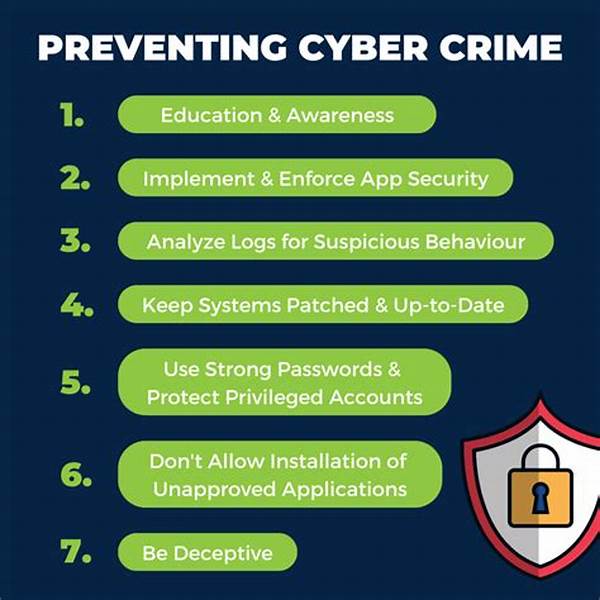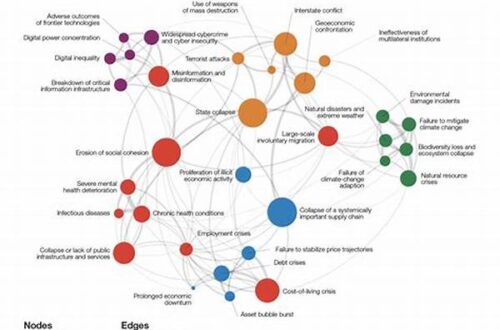In the contemporary digital era, where information is both a critical asset and a formidable commodity, the protection against espionage has assumed unprecedented significance. Organizations are increasingly cognizant of the need to safeguard sensitive information from adversaries who seek to exploit vulnerabilities for economic, political, or tactical gain. In this context, anti-espionage cybersecurity measures are imperative to ensuring the sanctity and integrity of proprietary information. These measures employ an arsenal of advanced technologies and strategies designed to thwart espionage activities and fortify an organization’s defense posture.
Importance of Anti-Espionage Cybersecurity Measures
The significance of anti-espionage cybersecurity measures can hardly be overstated. As covert operations aimed at stealing sensitive information become increasingly sophisticated, organizations must adopt robust defense mechanisms. Anti-espionage measures encompass a wide array of technological safeguards, including encryption, intrusion detection systems, and threat intelligence. These technologies enable organizations to detect espionage attempts in real-time and respond promptly. Moreover, they play a pivotal role in protecting intellectual property and maintaining competitive advantage. Consequently, organizations must continuously evaluate and upgrade their defense strategies to stay ahead of potential threats. Through rigorous training programs and well-established protocols, companies can foster a security-conscious culture. This cultural shift is crucial in preempting espionage attempts by embedding security into the organizational DNA. By focusing on both technological and human factors, organizations are better equipped to mitigate risks and preserve the confidentiality and integrity of their data. In addition, collaboration between governments, industries, and cybersecurity experts is essential to counter espionage on a broader scale.
Key Components of Anti-Espionage Strategy
1. Encryption Technologies: Employing strong encryption technologies is a cornerstone of anti-espionage cybersecurity measures. By encrypting sensitive data, organizations can make it substantially more difficult for unauthorized parties to access and misuse information.
2. Intrusion Detection Systems: These systems play an integral role in anti-espionage cybersecurity measures by monitoring networks for suspicious activities. They enable organizations to identify potential threats and act quickly to prevent data breaches.
3. Threat Intelligence Integration: Incorporating threat intelligence into security protocols is vital for effective anti-espionage cybersecurity measures. This approach helps in anticipating potential threats and enhancing the organization’s defense capabilities.
4. Employee Training Programs: Conducting employee training programs is essential in implementing effective anti-espionage cybersecurity measures. These programs raise awareness and equip employees with the knowledge to recognize and report suspicious activities.
5. Access Control Mechanisms: Robust access control systems limit data access to authorized personnel, which is crucial in anti-espionage cybersecurity measures. This minimizes the risk of internal threats and unauthorized data manipulation.
Technological Advancements in Anti-Espionage
The evolution of technology has significantly enhanced the effectiveness of anti-espionage cybersecurity measures. Modern security frameworks incorporate artificial intelligence (AI) and machine learning to predict and counter espionage threats proactively. AI enables the automation of threat detection processes, ensuring that even the most subtle signs of espionage are uncovered. Moreover, blockchain technology is proving to be revolutionary in safeguarding data integrity by creating immutable records that are resistant to tampering. These technological advancements allow organizations to deploy more robust and resilient security architectures. Nevertheless, as technology evolves, so do the methods employed by cyber espionage agents. This ongoing technological arms race necessitates continuous innovation and adaptation. Organizations must invest heavily in research and development to keep pace with emerging threats and to develop cutting-edge anti-espionage tools. In this context, fostering partnerships across industries can lead to shared intelligence and resources, enhancing the collective cybersecurity posture globally.
Challenges in Implementing Anti-Espionage Measures
Implementing anti-espionage cybersecurity measures presents several challenges that organizations must navigate with diligence and strategic foresight. One significant hurdle is the rapid advancement of technology, which requires constant updates and investments to keep security systems current. Additionally, the growing threat landscape means that organizations face attacks from sophisticated state-sponsored entities as well as independent hackers. Balancing the need for robust security with operational efficiency is another complex issue. Overly restrictive security protocols can impede business processes and innovation. Therefore, organizations must carefully design their security frameworks to be both effective and minimally intrusive. Furthermore, the human factor remains a critical vulnerability, as employees can unwittingly become conduits for espionage activities. This highlights the necessity of comprehensive training programs to instill a culture of vigilance and accountability. Lastly, the global nature of cyber threats necessitates cross-border collaboration, requiring organizations to align with international security standards and best practices.
Strategies for Enhancing Cybersecurity Defenses
To bolster anti-espionage cybersecurity measures, organizations should adopt a multi-layered security approach. This strategy involves integrating diverse security technologies and practices to create a formidable defense system. Regular security audits and vulnerability assessments are crucial for identifying and addressing potential weak points within the organizational infrastructure. Moreover, establishing clear incident response protocols ensures a structured and efficient reaction to security breaches, minimizing damage and recovery time. Collaborating with external cybersecurity experts can provide valuable insights into emerging threats and the development of tailored defense strategies. Additionally, fostering an environment that encourages the sharing of best practices within and between industries helps strengthen the overall cybersecurity landscape. Continuous improvement and developments in security practices are also vital, as they enable organizations to adapt to the evolving threat environment proactively. By embracing these strategies, organizations can significantly enhance their resilience against espionage and protect their critical assets.
The Future of Anti-Espionage Cybersecurity
The future of anti-espionage cybersecurity measures is poised to be shaped by the continued integration of advanced technologies such as AI, quantum computing, and blockchain. These innovations promise to revolutionize data protection by offering unprecedented levels of security and integrity. Quantum encryption, in particular, holds the potential to render traditional decryption techniques obsolete, providing a virtually impenetrable shield against data theft. Furthermore, as cybersecurity threats grow more complex, the symbiotic relationship between human intelligence and technological advancements will become increasingly important. The development of sophisticated algorithms capable of autonomously identifying and neutralizing espionage attempts is anticipated to be a game-changer. Meanwhile, the importance of international cooperation and regulatory frameworks will be amplified, facilitating a unified response to global cyber threats. Organizations will need to remain agile, continually reassessing and adapting their security strategies to remain ahead in the ongoing battle against espionage. In this dynamic landscape, fostering a culture of innovation and collaboration will be crucial to achieving lasting cybersecurity resilience.
Summary
In summary, anti-espionage cybersecurity measures are an essential component of modern organizational strategy, equipped to confront a wide array of sophisticated threats. With the increasing prevalence of cyber espionage, the implementation of structured, multi-faceted defense mechanisms has become paramount. These measures not only safeguard against data theft but also preserve organizational reputation and market position. By adopting a proactive approach that encompasses both technological advancements and human vigilance, organizations can effectively mitigate risks. The intersection of cutting-edge technologies, such as AI and blockchain, with traditional security practices provides a holistic defense against espionage attempts. Furthermore, as the threat landscape continuously evolves, ongoing innovation and collaboration within the cybersecurity community will be critical. In this context, the shared commitment of governments, industries, and individuals to enhancing security protocols and standards cannot be understated. Ultimately, by prioritizing anti-espionage cybersecurity measures, organizations can navigate the complexities of the digital age with confidence and resilience.





